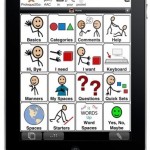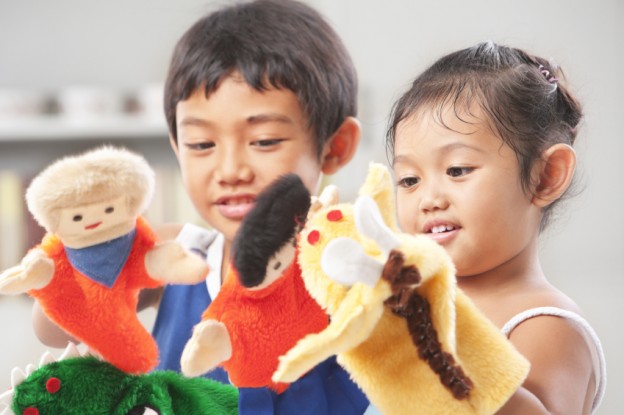
Special Education
Most therapists like playing traditional board games like checkers, or Parchesi, particularly in the early sessions of therapy. Because children are already familiar with these games, they can ease the transition from “real life” to the therapeutic environment.
The first therapeutic board game, The Talking, Feeling, and Doing Game, was published by Dr. Richard Gardner in 1973. Now child therapists have several hundred games available to them covering a wide range of childhood issues.
There are therapeutic books on almost every subject imaginable. Most of these books focus on a specific childhood problem, and present a protagonist that models a way to cope with or solve that problem.
Therapeutic workbooks take a psycho-educational approach to solving emotional and behavioral problems. These workbooks typically present activities which can be sent home as “therapeutic homework.
Art therapy techniques are a great way to get kids to communicate their feelings. Most therapists have a box full of art materials including pencils, crayons, water colors paints, stickers, stamps, and more.
Molding, pounding, stretching, squishing are good ways for children to relieve tension and stress. Play dough also helps children hone their creative skills.
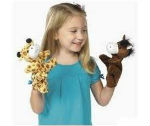 Puppets are helpful for role-playing and communicating thoughts and feelings which might otherwise be difficult to express. Puppets are a great way to engage a child who has special needs.
Puppets are helpful for role-playing and communicating thoughts and feelings which might otherwise be difficult to express. Puppets are a great way to engage a child who has special needs.
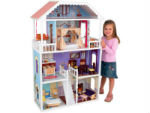 For younger children a doll house is another great tool for role-playing, and expressing pre-verbal issues. Doll houses also help foster imaginative play.
For younger children a doll house is another great tool for role-playing, and expressing pre-verbal issues. Doll houses also help foster imaginative play.
These are new tools for many therapists, but with the array of inexpensive and creative apps now available, they will soon be widely used by creative child therapists.
This guest post was written by Lawrence Shapiro, Ph.D. President, Childswork/Childsplay, and author of over 150 therapeutic toys. Visit their store and blog at childswork.com.
10 Essential Tools For Therapists And Special Educators
Therapy for children has changed a great deal since the days when Anna Freud used play as a way to apply the psychoanalytic techniques of her famous father to the problems of children. Time-limited cognitive behavior modification (CBT) has largely replaced the use of psychoanalytic techniques, and open ended play therapy. Therapy occurs in many locations outside the classic playrooms, including the offices of school counselors, special education classrooms, hospital bedsides, and even the child’s own home. But one thing that has not changed is the use of play to engage children and help them learn to overcome their problems. Here are 10 Essential Tools For Therapists And Special Educators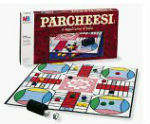 1. Traditional Board Games
1. Traditional Board Games
Most therapists like playing traditional board games like checkers, or Parchesi, particularly in the early sessions of therapy. Because children are already familiar with these games, they can ease the transition from “real life” to the therapeutic environment.
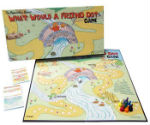 2. Counseling Board Games
2. Counseling Board Games
The first therapeutic board game, The Talking, Feeling, and Doing Game, was published by Dr. Richard Gardner in 1973. Now child therapists have several hundred games available to them covering a wide range of childhood issues.
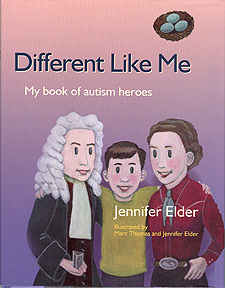 3. Bibliotherapy Books
3. Bibliotherapy Books
There are therapeutic books on almost every subject imaginable. Most of these books focus on a specific childhood problem, and present a protagonist that models a way to cope with or solve that problem.
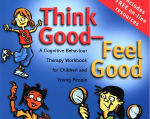 4. Therapeutic Workbooks
4. Therapeutic Workbooks
Therapeutic workbooks take a psycho-educational approach to solving emotional and behavioral problems. These workbooks typically present activities which can be sent home as “therapeutic homework.
 5. Drawing materials
5. Drawing materials
Art therapy techniques are a great way to get kids to communicate their feelings. Most therapists have a box full of art materials including pencils, crayons, water colors paints, stickers, stamps, and more.
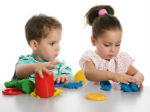 6. Clay or Play Dough
6. Clay or Play Dough
Molding, pounding, stretching, squishing are good ways for children to relieve tension and stress. Play dough also helps children hone their creative skills.
7. Balls and other toys
Playing catch with a child or stacking blocks is a good way to “join” with a child on their level. Simple repetitive play is calming, and often presents an opportunity for children to communicate their thoughts and feelings.8. Puppets
 Puppets are helpful for role-playing and communicating thoughts and feelings which might otherwise be difficult to express. Puppets are a great way to engage a child who has special needs.
Puppets are helpful for role-playing and communicating thoughts and feelings which might otherwise be difficult to express. Puppets are a great way to engage a child who has special needs.
9. Doll House
 For younger children a doll house is another great tool for role-playing, and expressing pre-verbal issues. Doll houses also help foster imaginative play.
For younger children a doll house is another great tool for role-playing, and expressing pre-verbal issues. Doll houses also help foster imaginative play.

